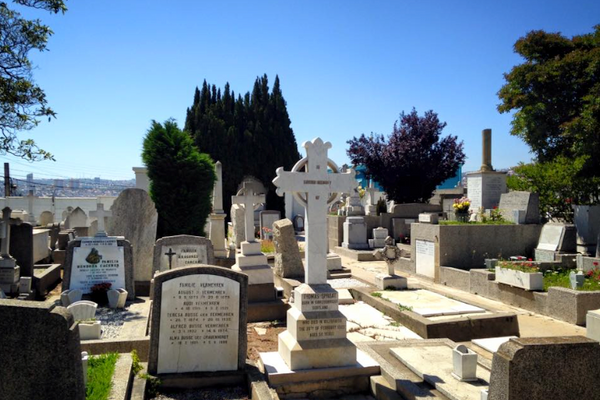Reloj de Flores (Flower Clock)
Built for the 1962 World Cup, this fully functioning botanical clock is still ticking.
Soccer fans aren’t known for their love of flowers. Or clocks, for that matter, unless they’re counting down the seconds to a victory. But when Viña del Mar, Chile, was chosen as a venue for the 1962 World Cup, the coastal city nonetheless decided to spruce up its seafront with a large, flowery, fully functioning clock.
The Reloj de Flores (Flower Clock) is a botanical landmark in Viña del Mar to this day. It has been severely damaged by both vandalism and a fallen tree over the years, but the flowers keep on blooming, and the clock’s still ticking.
The original clock mechanism was built by the Favag clockmakers of the Swiss city of Neuchâtel, a world-famous center for clock and watchmaking. It was shipped over and installed on a sloping lawn at the foot of Cerro Castillo. The hour, minute, and second hands are between 8 and 10 feet long, gently tick-tocking along above a clock face made entirely of flowers.
The flowers of the botanical dial are allowed to grow no higher than 4 inches (10 centimeters) to avoid impeding the path of the clock hands turning above them. Selected for their year-round blooms, the buds spell out the numbers on the clock face and create the inner and outer circles of the dial.
But it hasn’t all been a bed of roses since 1962. The flower clock has suffered severe damage on two occasions, the first in September 2013 when vandals damaged the clock mechanism. Rather than try to repair the original Swiss clock, the city decided to replace it with a more modern and reliable timepiece controlled by GPS (it tells near-perfect time, so you can happily set your watch to it). Made by Relojes Olvera III Generación in Zacatlán, México, this new clock was also connected to a digital system that chimes every 15 minutes and, depending on the season or specific events, plays a variety of musical overtures.
Less than four years later, however, the clock was all but obliterated when a tree fell on it during strong winds and torrential rain. It was a complete mess, and all that remained of the iconic clock were a few sadly bent and buckled clock hands.
It only took 40 days, however, for the city to restore its famous flower clock. The reconstruction effort used more than 7,000 flowers and bushes, with each number on the clock face requiring more than 100 plants. And once the new clock mechanism and hands had arrived from Mexico, the timepiece was back to its flowery best.
Know Before You Go
The clock is located along the seafront and is accessible 24 hours a day. Late afternoon is a good time to visit, when the setting sun casts a golden light over the hands and flowers. The clock is lit at night.


















Follow us on Twitter to get the latest on the world's hidden wonders.
Like us on Facebook to get the latest on the world's hidden wonders.
Follow us on Twitter Like us on Facebook